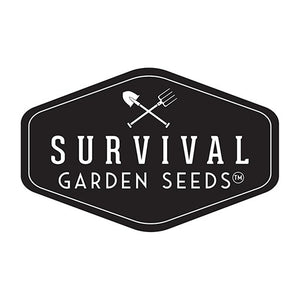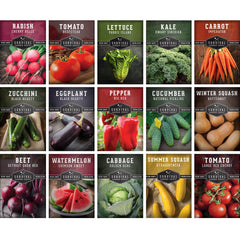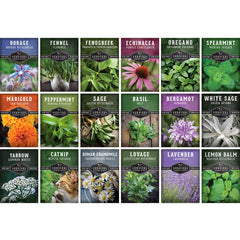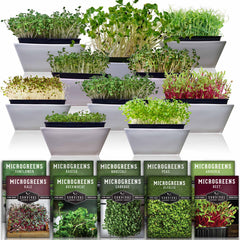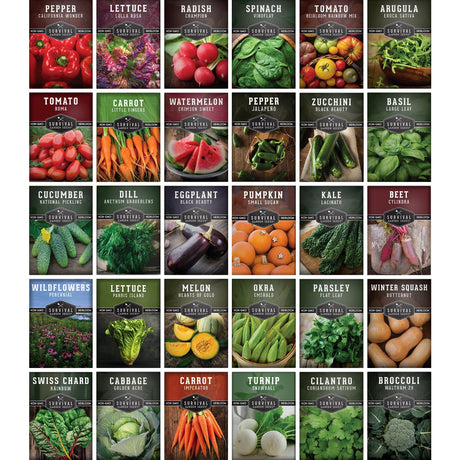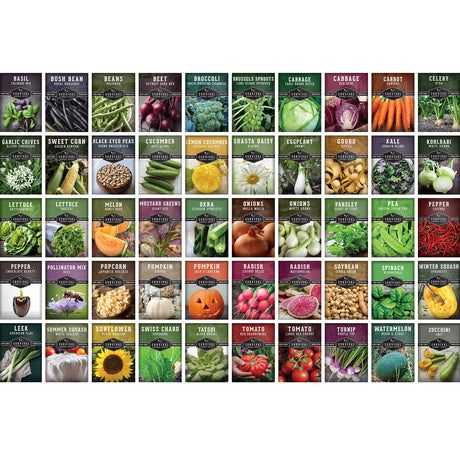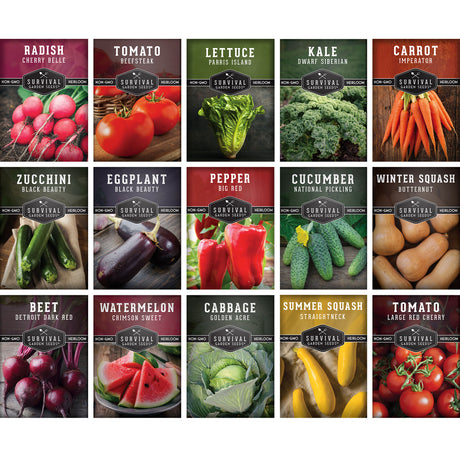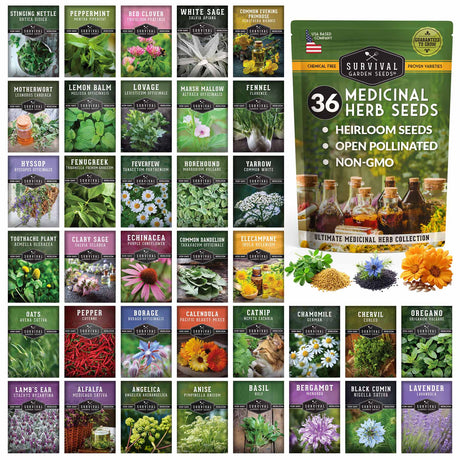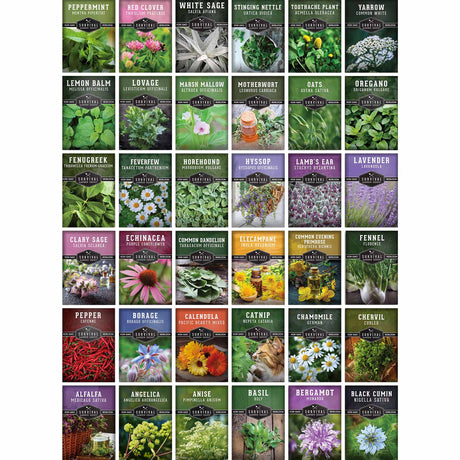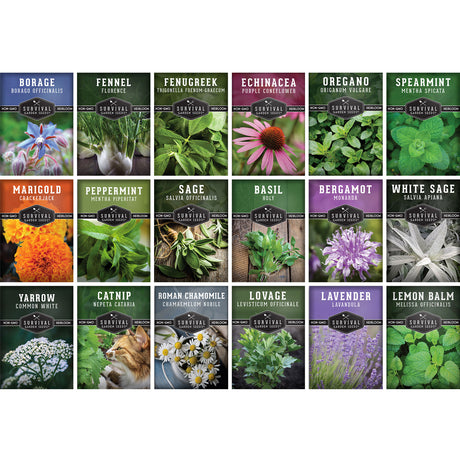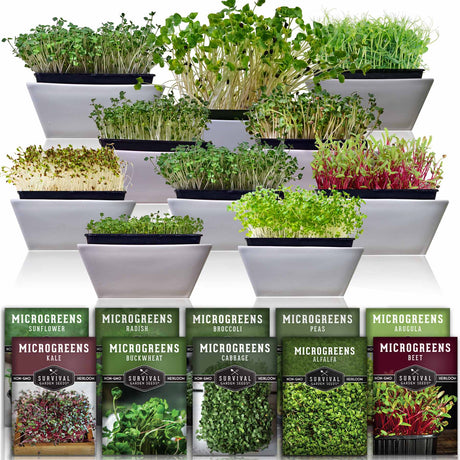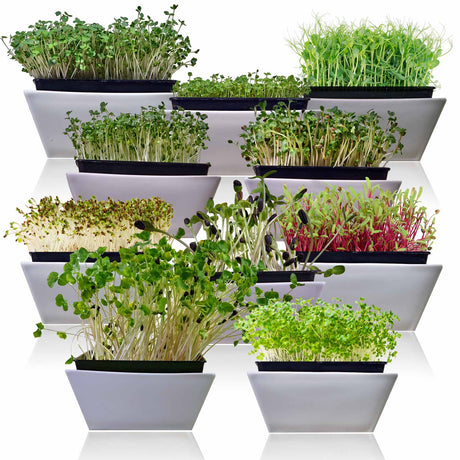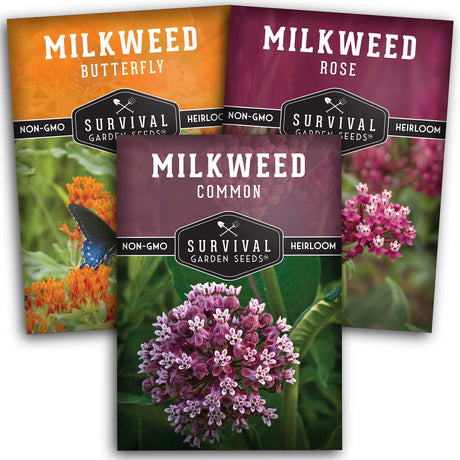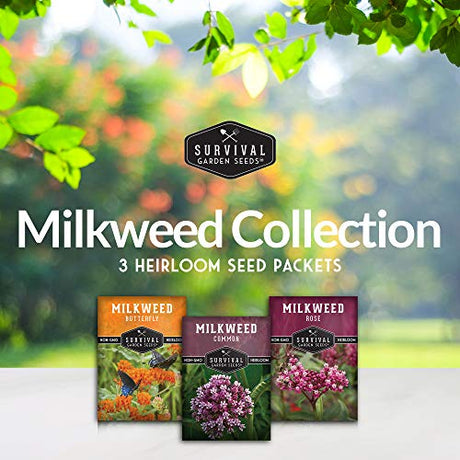How are you celebrating Earth Day 2025? This year, Earth Day follows right after Easter. That means that many of the typical Earth Day activities like tree plantings or community clean-up days have been replaced with other festivities like egg hunts and sunrise services this weekend. But Earth Day and Easter do have many common themes that can be honored together, especially those of renewal, hope, and the triumph of life and light over darkness and death.

We invite you to use Earth Day and the coming growing season to nurture a sense of resilience and stewardship for your family and build a bright future. Take the time to deepen your roots and prepare your homestead for whatever comes next. By growing survival gardens filled with heirloom veggies and natural remedies, building soil health, and strengthening our ecosystems, you're be investing in tomorrow.
Plant Victory Gardens with Heirloom Seed Varieties
One way you can celebrate Earth Day is by growing a Victory Garden with the same heirloom varieties your grandparents planted. In the long run, this can save you money and reduce your dependence on commercial agriculture. Small local growers (like you) already do what Big Ag won’t: protect biodiversity, feed neighbors, and work with the land.
Every step away from their massive monocultures of GMO seeds and heavy use of pesticides, herbicides, and petrochemical fertilizers is a step towards empowerment and self-reliance. Responsible stewardship of the land, preservation of heritage foods and medicinal herbs, and protection of the environment for future generations can start with the simple but powerful act of planting seeds.
Regenerative Farming & Soil Health

The home garden is a great way to get in touch with the cycles of nature and to give back to the earth. Soil is an undervalued resource that has been significantly degraded by modern practices. Regenerating the soil in your own backyard can help improve crop yields, reduce your need for water and fertilizer, and support local biodiversity.
Here are a few practices to help build healthy soil in your garden:
-
Compost & Leaf Mold
Turn your leaves, yard clippings, and kitchen scraps into nutrient-rich garden amendments like compost and leaf mold. You’ll reduce waste and greenhouse gasses while saving money on fertilizer and soil amendments. -
Crop Rotation
Rotate the location of your annual crops from year to year, especially heavy feeders like tomatoes and squash. You’ll build soil health while helping prevent disease and control pests like squash bugs and hornworms. -
Cover Crops
Bare soil erodes quickly, compacts easily, and invites weeds. By selecting the right cover crops, you can build soil structure and fertility so that your plants will thrive with less work. -
No-Till or Low-Dig Methods
By minimizing the damage you do to the soil with low-till gardening, you’ll increase water retention and preserve the fungal communities that help plant roots absorb nutrients.
Grow Native Plants

There’s a food web crisis happening right now. Bee populations are collapsing and key species like the monarch butterfly are in steep decline. Songbirds need hundreds of caterpillars a day to feed their baby birds. If that’s not urgent enough to spur action, consider that many of our basic food crops rely on bees and other pollinators.
All of these changes ripple outward, threatening our ecosystems and endangering our entire way of life. Human beings caused this crisis, so it’s up to us to fix it. One of the easiest (and most powerful) ways to make a positive change is growing more native plants like Bergamot (Bee Balm) and Black-Eyed Susan that are essential to the tiny helpers that keep our world in balance.
Adding native plants to your garden helps restore the American landscape to its natural state. Because they are adapted to local conditions, native plants are often low maintenance, drought tolerant, and resistant to pests once established. This means you’ll need fewer resources to care for these lovely plants that help support the productivity of your vegetables and herbs.
At Survival Garden Seeds, we’re working on an exciting new project to offer more native species, including keystone plants, so it will be easy for you to add more native plants to your Victory Garden. Whether you plant pollinator hedgerows, a prairie patch, or just a few containers on your patio, your garden can also be part of this solution.
Rethink Your Lawn

Another way to honor Earth Day is to shrink your traditional turf lawn, replace it with alternative plants, or both. This can be as simple as adding an extra garden bed or two for some extra vegetables, herbs, or flowers. Low-growing ground covers like creeping thyme, yarrow, chamomile, and clover are lovely lawn alternatives that don’t require constant watering, mowing, and feeding.
Seed Saving & Seed Swaps
Whatever plants you grow, starting from seed and saving your own sets you up for success, year after year. Learn how to save seeds and share them with your neighbors as a way to honor Earth Day. Heirloom, open-pollinated seeds provide valuable insurance against monoculture and supply chain collapses. As a bonus, seed lineages that are adapted to local conditions promote ecological resilience—helping communities thrive during hard times.
Organize or join a local seed swap; it’s a beautiful way to care for the Earth and one another.
Community-Based Food Resilience
Neighborhood networks are so important to safeguard against supply chain fragility. Crop-sharing, bartering, community gardens, and food cooperatives all support people over corporations. Skills exchanges can be a way to reclaim forgotten skillsets like canning, composting, and herbalism.
Look for ways to share important resources like unused land, rainwater, tools, and even compost. These local actions help restore food sovereignty and intergenerational resilience, as well as regenerating ecosystems and relationships that have been degraded by modern systems.
Rooted in the Future
Future generations will inherit the earth we leave behind. This Earth Day, we invite you to join us in promoting a legacy of living in harmony with the Earth by honoring the values of resilience, sustainability, and stewardship. So grab your gardening gloves, roll up your sleeves, and get planting!

